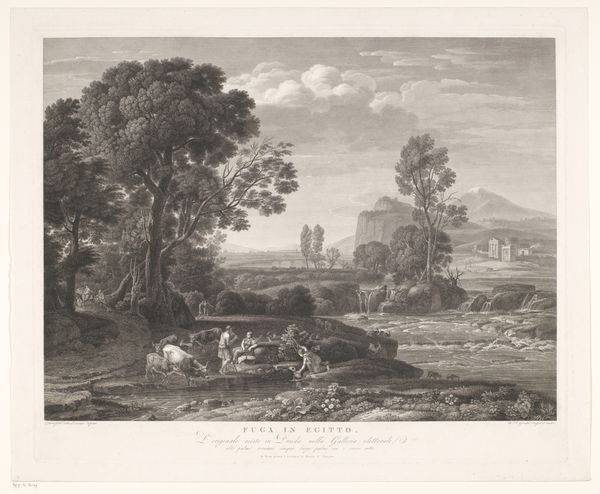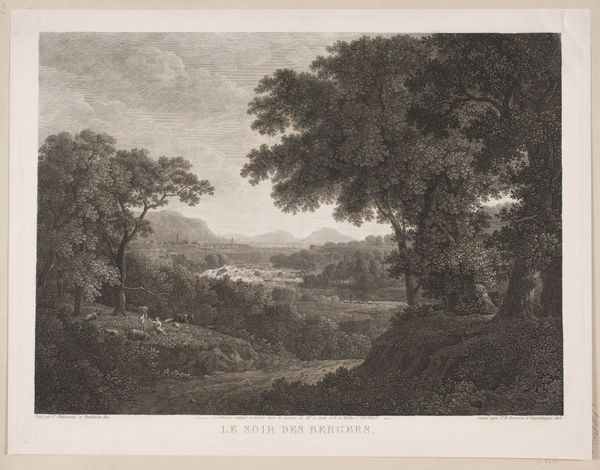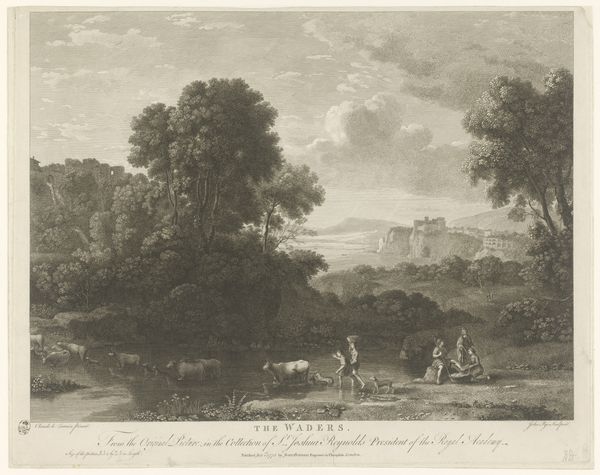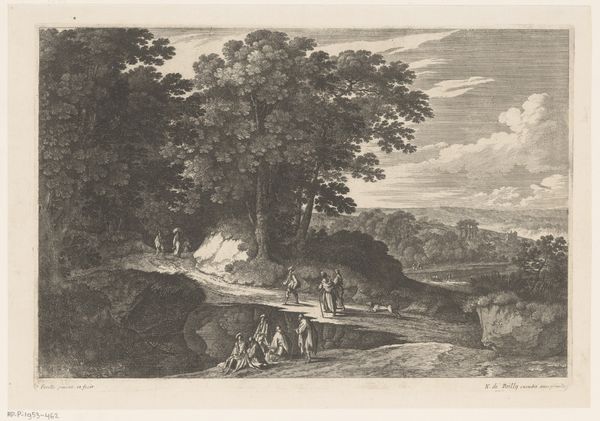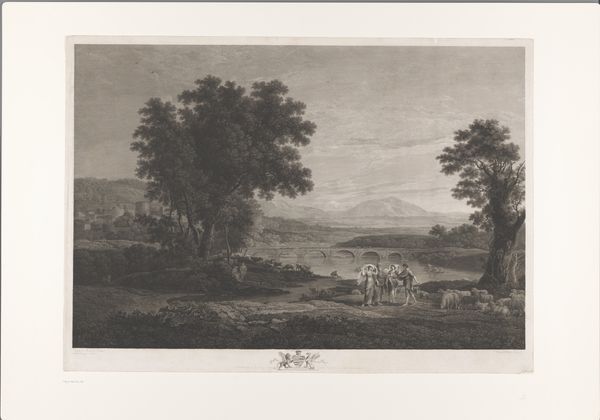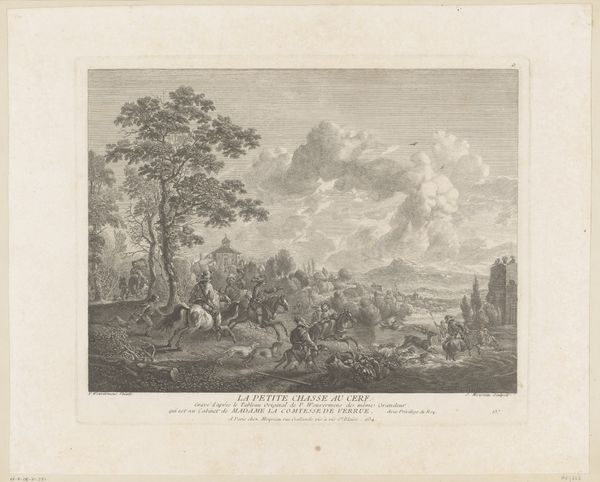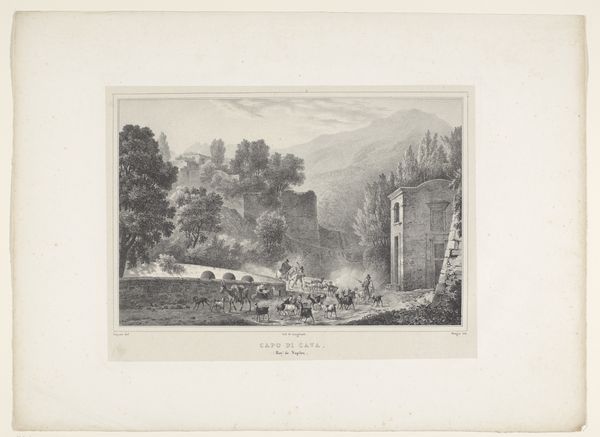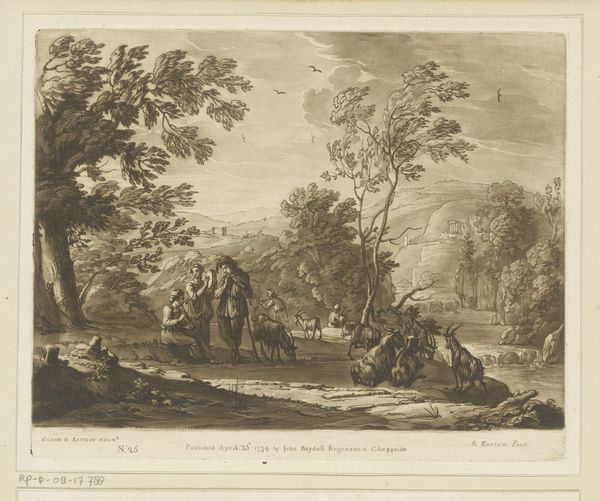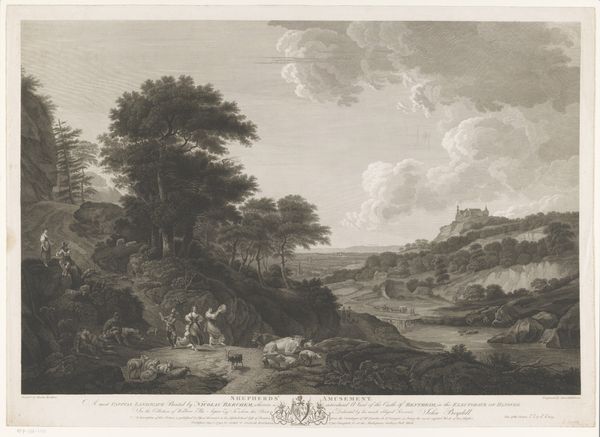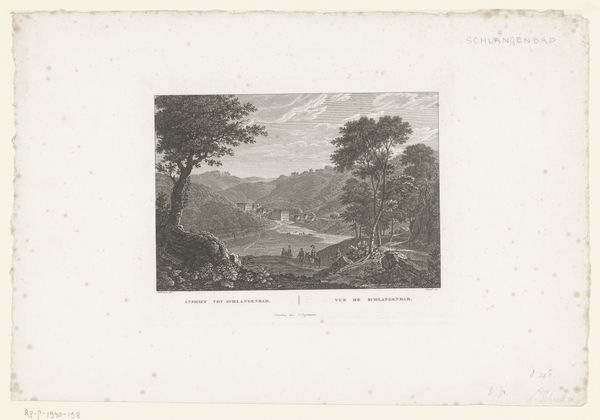
Landschap met herders en vrouw op muilezel aan de oever van een rivier 1787
0:00
0:00
Dimensions: height 442 mm, width 564 mm
Copyright: Rijks Museum: Open Domain
Editor: So, this is "Landscape with shepherds and a woman on a mule on the banks of a river," etched in 1787 by William Woollett. The details are incredibly fine. I'm wondering, with an etching like this, how does the material process influence its interpretation? Curator: A crucial question. Consider the means of production: the labor of etching each line, the plate's material properties. Line engravings and etchings gained popularity for mass production because of their cost-effectiveness and ability to mimic the effects of drawings. Do you notice how the lines create tone and texture? Editor: I do! It's amazing how they suggest form and light using just lines. It’s all black and white, and not very picturesque, however. Curator: Think about the intended audience and context for these landscapes. Landscapes moved from backdrops to protagonists in prints because of an increased awareness and valorization of ‘Nature’. Were these images consumed as documentation, instruction or inspiration by particular social classes? Who was this William Woollett who etched this in the 18th century? Editor: Okay, so thinking about it as part of a larger system of production and consumption makes the work feel less like a unique, artistic vision, and more of a manufactured commodity. That gives me something to dig into. Curator: Exactly. Examining the labor, materiality, and potential consumption unveils narratives obscured by conventional aesthetic considerations, questioning assumptions regarding ‘high’ and ‘low’ art distinctions. Editor: That’s really changed how I see this piece, from just an idyllic scene to a product of its time. Thanks! Curator: Likewise, considering mass production illuminates an interesting historical crossroad.
Comments
No comments
Be the first to comment and join the conversation on the ultimate creative platform.


